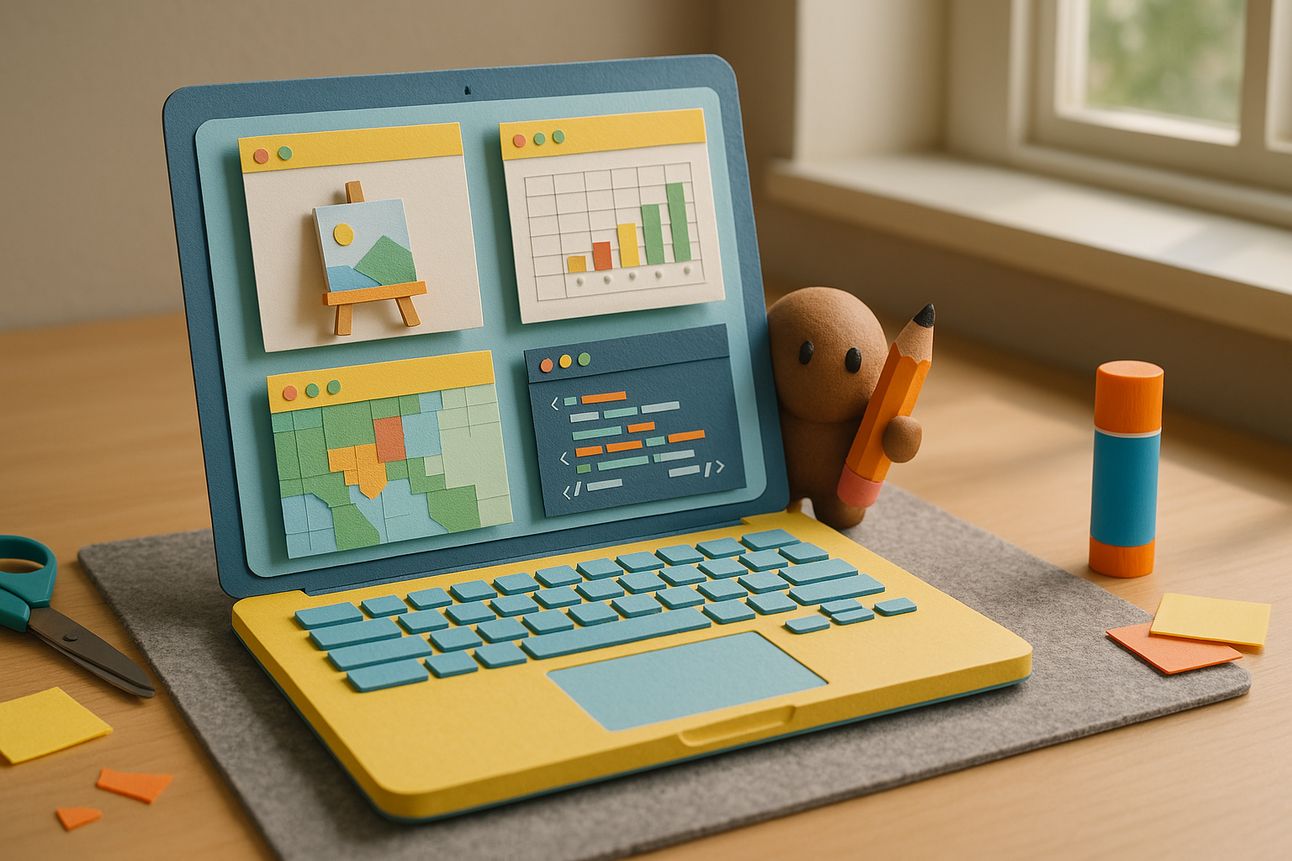- Today On AI
- Posts
- Canva Unveils AI App Builder, Spreadsheets, and Image Tools in Major Expansion
Canva Unveils AI App Builder, Spreadsheets, and Image Tools in Major Expansion
AND: OpenAI updates ChatGPT to reference your past chats

✨TodayOnAI’s Daily Drop
OpenAI updates ChatGPT to reference your past chats
Canva Unveils AI App Builder, Spreadsheets, and Image Tools in Major Expansion
Powering AI: Data Centers May Match Japan’s Energy Use by 2030
💬 Let’s Fix This Prompt
🧰 Today’s AI Toolbox Pick
| 📌 The TodayOnAI Brief |
CANVA

🚀 TodayOnAI Insight: Canva is expanding beyond design with a powerful slate of AI tools, including an assistant that can generate images, code apps, and handle spreadsheets—underscoring its ambition to become a full-stack creative and productivity platform.
🔍 Key Takeaways:
AI Assistant: The new Canva AI can generate images, write copy, suggest design ideas, and create documents on command.
Prompt-to-App with Canva Code: Users can now build mini-apps like interactive maps or calculators via prompts, powered in part by a partnership with Anthropic.
Advanced Editing Tools: Canva's photo editor gains AI-driven features like object modification and lighting-aware background generation—targeting rivals like Adobe and Apple-owned Pixelmator.
Spreadsheet Integration: The launch of Canva Sheets adds spreadsheet functionality to Canva’s suite, reinforcing its appeal to enterprise users.
Enterprise Strategy: These updates build on Canva’s push into business use cases, following last year’s launch of an enterprise-focused tier with SSO and admin controls.
💡 Why This Stands Out: Canva's AI overhaul signals a clear shift from design tool to multipurpose productivity suite. By embedding generative capabilities across creative, technical, and enterprise domains, it's positioning itself as a formidable challenger to Adobe and Google Workspace alike. As AI becomes table stakes, will design-first platforms like Canva redefine the productivity stack?
OPENAI

🚀 TodayOnAI Insight: OpenAI is expanding ChatGPT’s memory capabilities, enabling the chatbot to remember user-specific details across conversations. This update is designed to make interactions more personal, efficient, and context-aware—especially for Pro and Plus subscribers.
🔍 Key Takeaways:
ChatGPT’s new “reference saved memories” feature rolls out to Pro and Plus users (excluding the U.K., EU, and select European countries).
It allows ChatGPT to recall user-shared details, improving continuity in text, voice, and image interactions.
Users can view, manage, or delete memories—or disable the feature entirely via settings.
Temporary Chats offer a privacy-focused option, excluding conversation data from memory.
Memory is on by default for users who previously enabled the earlier version of the feature.
💡 Why This Stands Out: The move signals OpenAI’s push toward more adaptive, assistant-like AI—where memory enhances utility without constant re-explaining. As AI systems evolve from tools to digital collaborators, user data stewardship becomes a central tension. Will richer personalization outweigh growing privacy concerns?
AI
Powering AI: Data Centers May Match Japan’s Energy Use by 2030

🚀 TodayOnAI Insight: The International Energy Agency (IEA) warns that AI’s surging energy demands—primarily from data centers—could strain global power systems by 2030, potentially undermining climate goals unless regulators step in.
🔍 Key Takeaways:
AI data centers could consume as much electricity by 2030 as Japan does today, with demand more than doubling.
High-performance AI facilities may use up to 20× more energy than standard data centers.
While AI can enhance energy efficiency and renewable grid design, unchecked growth may worsen fossil fuel reliance.
The IEA calls for proactive regulation to balance AI’s potential benefits against its environmental cost.
Critics argue the IEA underestimates the scale of the risk, urging more aggressive safeguards.
💡 Why This Stands Out: AI’s energy footprint is no longer a back-end technical concern—it’s a frontline sustainability issue. As governments race to harness AI’s promise, the gap between potential efficiency gains and real-world energy costs is widening. The question isn’t just how we build AI systems, but how sustainably we can scale them.
| 💬 Let’s Fix This Prompt |
✨ See how a simple prompt upgrade can unlock better AI output.
🔹 The Original Prompt
"Generate blog ideas for a new brands."
At first glance, this prompt might seem okay. But it's too broad — and that limits the quality of AI-generated results. Let’s improve it using prompt engineering best practices.
✅ The Improved Prompt
Generate 10 blog post ideas for a newly launched consumer brand. Focus on building brand awareness, telling the origin story, showcasing product benefits, and connecting emotionally with early customers. Include a mix of storytelling, how-to content, and community-building themes.
💡 Why It's Better
Adds context (“newly launched consumer brand”)
Targets key marketing goals (awareness, connection, product education)
Includes content types (storytelling, how-to, community)
Encourages a structured, diverse content strategy
🛠️ Learn how to adapt this prompt for SaaS, AI tools, dev teams & more →
Read the full PromptPilot breakdown
💡 Bonus Tool: Want to generate and master prompts instantly?
👉 Try PromptPilot by TodayOnAI (Free to use)
| 🧠 Smart Picks |
📰 More from the AI World
How Chef Robotics found success by turning away its original customers
AI models still struggle to debug software, Microsoft study shows
LiveKit’s tools power real-time communications, including OpenAI’s Voice Mode
Nvidia’s H20 AI chips may be spared from export controls — for now
🧰 Today’s AI Toolbox Pick
🔊Krisp (Audio Tool): Improves the productivity of online meetings with voice clarity tools and a meeting assistant.
💬Wonderchat (Chatbot Tool): Builds ChatGPT-powered chatbots in minutes, trained on your website links and PDF files.
🏦Mezzi (Finance Tool): Saves on capital gains taxes, reduces fund feeds, and increases passive income.